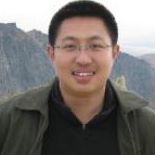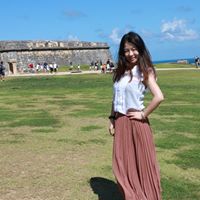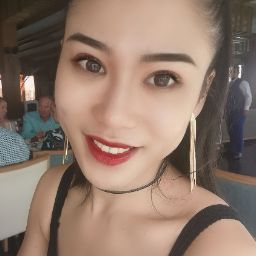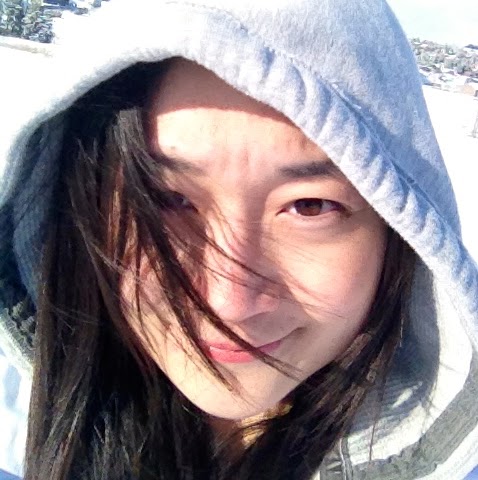Xing Zhang
age ~44
from Houston, TX
- Also known as:
-
- Xin G Zhang
Xing Zhang Phones & Addresses
- Houston, TX
- La Jolla, CA
- Los Angeles, CA
- Fremont, CA
- San Diego, CA
Medicine Doctors

Xing Jian Zhang
view sourceLicense Records
Xing Zhang
Address:
San Diego, CA 92108
License #:
31663 - Expired
Issued Date:
Nov 3, 2014
Expiration Date:
Jun 30, 2016
Type:
Certified Public Accountant
Us Patents
-
Movement Of Virtual Objects With Respect To Virtual Vertical Surfaces
view source -
US Patent:20220221976, Jul 14, 2022
-
Filed:Jan 13, 2021
-
Appl. No.:17/148366
-
Inventors:- Palo Alto CA, US
Yu Lou - Palo Alto CA, US
Anandram Sundar - Santa Clara CA, US
Chun Kai Wang - Sunnyvale CA, US
Jack Mousseau - Palo Alto CA, US
Kevin May - Oakland CA, US
Xing Zhang - Santa Clara CA, US
Geng Yan - San Carlos CA, US -
International Classification:G06F 3/0481
G06F 3/0486
G06F 3/0484 -
Abstract:A virtual vertical surface in a three-dimensional space that represents a physical room may be detected. Responsive to a first user input gesture, movement of a virtual object within the three-dimensional space may be displayed. The movement may be to a first location in which a portion of the virtual object intersects a portion of the virtual vertical surface. A virtual vertical surface designator may be displayed corresponding to the virtual vertical surface based at least in part on the portion of the virtual object intersecting the portion of the virtual vertical surface. Upon determining that a second user input gesture meets or exceeds a movement threshold, movement of the three-dimensional object from the first location to a second location within the three-dimensional space may be displayed. The second location may appear beyond the virtual vertical surface.
-
High Step Coverage Tungsten Deposition
view source -
US Patent:20220181158, Jun 9, 2022
-
Filed:Apr 7, 2020
-
Appl. No.:17/601918
-
Inventors:- Fremont CA, US
Tsung-Han Yang - San Jose CA, US
Anand Chandrashekar - Fremont CA, US
Xing Zhang - San Jose CA, US -
Assignee:Lam Research Corporation - Fremont CA
-
International Classification:H01L 21/285
H01L 21/768 -
Abstract:Methods of depositing a tungsten nucleation layers that achieve very good step coverage are provided. The methods involve a sequence of alternating pulses of a tungsten-containing precursor and a boron-containing reducing agent, while co-flowing hydrogen (H2) with the boron-containing reducing agent. The H2 flow is stopped prior to the tungsten-containing precursor flow. By co-flowing H2 with the boron-containing reducing agent but not with the tungsten-containing precursor flow, a parasitic CVD component is reduced, resulting in a more self-limiting process. This in turn improves step coverage and conformality of the nucleation layer. Related apparatuses are also provided.
-
Reactant Gas Pulse Delivery
view source -
US Patent:20230130557, Apr 27, 2023
-
Filed:Mar 3, 2021
-
Appl. No.:17/907959
-
Inventors:- Fremont CA, US
Leonard Wai Fung KHO - San Francisco CA, US
Anand CHANDRASHEKAR - Fremont CA, US
Michael BOWES - Scotts Valley CA, US
Yong SUN - Fremont CA, US
Xing ZHANG - San Jose CA, US
Sumit Subhash SINGH - Bengaluru, IN -
International Classification:C23C 16/455
C23C 16/04
C23C 16/52
H01L 21/02
H01L 21/285
H01L 21/768 -
Abstract:Providing herein are methods of delivery of gas reactants to a processing chamber and related apparatus.
-
Placing And Manipulating Multiple Three-Dimensional (3D) Models Using Mobile Augmented Reality
view source -
US Patent:20230054420, Feb 23, 2023
-
Filed:Oct 11, 2022
-
Appl. No.:18/045688
-
Inventors:- Palo Alto CA, US
Jonathan BERNADEL-HUEY - San Francisco CA, US
Kevin MAY - Oakland CA, US
Xing ZHANG - Santa Clara CA, US
Karl HILLESLAND - San Carlos CA, US
Jack MOUSSEAU - Palo Alto CA, US
Simon FOX - Palo Alto CA, US -
International Classification:G06T 19/20
G06T 19/00
G06Q 30/06
G06F 3/01 -
Abstract:Techniques for placing and manipulating multiple three-dimensional (3D) models using mobile augmented reality (AR) are described. One technique includes receiving a first request to initialize an AR simulation of a first product for sale within a physical environment. In response to the first request, a first 3D model of the first product for sale is rendered onto the screen. After rendering the first 3D model, a second request to visualize a second product for sale within the physical environment is received during the AR simulation of the first product for sale. In response to the second request, a second 3D model of the second product for sale is rendered onto the screen with the first 3D model.
-
Optically Challenging Surface Detection For Augmented Reality
view source -
US Patent:20210248798, Aug 12, 2021
-
Filed:Apr 28, 2021
-
Appl. No.:17/243273
-
Inventors:- Palo Alto CA, US
Jared Corso - San Mateo CA, US
Xing Zhang - Sunnyvale CA, US
Arnab Dhua - Mountain View CA, US
Yu Lou - Mountain View CA, US
Jason Freund - Cupertino CA, US -
International Classification:G06T 11/60
G06T 7/13 -
Abstract:Approaches in accordance with various embodiments provide for the presentation of augmented reality (AR) content with respect to optically challenging surfaces. Such surfaces can be difficult to locate using conventional optical-based approaches that rely on visible features. Embodiments can utilize the fact that horizontal surfaces can be located relatively easily, and can determine intersections or boundaries of those horizontal surfaces that likely indicate the presence of another surface, such as a vertical wall. This boundary can be determined automatically, through user input, or using a combination of such approaches. Once such an intersection is located, a virtual plane can be determined whose relative location to a device displaying AR content can be tracked and used as a reference for displaying AR content.
-
Optically Challenging Surface Detection For Augmented Reality
view source -
US Patent:20200334882, Oct 22, 2020
-
Filed:Jun 17, 2020
-
Appl. No.:16/903932
-
Inventors:- Palo Alto CA, US
Jared Corso - San Mateo CA, US
Xing Zhang - Sunnyvale CA, US
Arnab Sanat Kumar Dhua - Mountain View CA, US
Yu Lou - Mountain View CA, US
Jason Freund - Cupertino CA, US -
International Classification:G06T 11/60
G06T 7/13 -
Abstract:Approaches in accordance with various embodiments provide for the presentation of augmented reality (AR) content with respect to optically challenging surfaces. Such surfaces can be difficult to locate using conventional optical-based approaches that rely on visible features. Embodiments can utilize the fact that horizontal surfaces can be located relatively easily, and can determine intersections or boundaries of those horizontal surfaces that likely indicate the presence of another surface, such as a vertical wall. This boundary can be determined automatically, through user input, or using a combination of such approaches. Once such an intersection is located, a virtual plane can be determined whose relative location to a device displaying AR content can be tracked and used as a reference for displaying AR content.
-
Curated Environments For Augmented Reality Applications
view source -
US Patent:20200258144, Aug 13, 2020
-
Filed:Feb 11, 2019
-
Appl. No.:16/272902
-
Inventors:- Palo Alto CA, US
Xing Zhang - Sunnyvale CA, US
Frank Partalis - San Francisco CA, US
Yu Lou - Palo Alto CA, US
Colin Jon Taylor - Orinda CA, US
Simon Fox - Palo Alto CA, US -
International Classification:G06Q 30/06
G06Q 30/02
G06T 19/00
G06N 3/08
G06F 3/0484
G06T 7/50 -
Abstract:A camera is used to capture image data of representations of a physical environment. Planes and surfaces are determined from a representation. The planes and the surfaces are analyzed using relationships there between to obtain shapes and depth information for available spaces within the physical environment. Locations of the camera with respect to the physical environment are determined. The shapes and the depth information are analyzed using a trained neural network to determine items fitting the available spaces. A live camera view is overlaid with a selection from the items to provide an augmented reality (AR) view of the physical environment from an individual location of the locations. The AR view is enabled so that a user can port to a different location than the individual location by an input received to the AR view while the selection from the items remains anchored to the individual location.
-
Video-Enhanced Greeting Cards
view source -
US Patent:20170206711, Jul 20, 2017
-
Filed:Dec 30, 2016
-
Appl. No.:15/395306
-
Inventors:- Santa Clara CA, US
Libo Su - San Jose CA, US
Xing Zhang - Mountain View CA, US -
International Classification:G06T 19/00
G06F 3/0484
G06K 9/00
G06T 15/00 -
Abstract:Provided are computer systems, methods, and non-transitory computer-readable medium configured for receiving or generating a video, extracting a still image from the video, printing the still image on a physical card and sharing the card. Viewing of the card can be augmented by the system that captures an image of the printed image on the card, uses the image to identify the video from which the printed image is extracted, and overlays the video on a visual representation of the card on the system, thereby generating an animated viewing experience from a card having a still image. Three-dimensional contents can be added to the augmented reality presentation, further enhancing the user experience.
Resumes

Research Scientist, Software Engineer
view sourceLocation:
Houston, TX
Industry:
Higher Education
Work:
Facebook
Research Scientist, Software Engineer
Intel Corporation Jun 2015 - Aug 2015
Wireless Research Intern
Rice University Jun 2015 - Aug 2015
Research Assistant
Research Scientist, Software Engineer
Intel Corporation Jun 2015 - Aug 2015
Wireless Research Intern
Rice University Jun 2015 - Aug 2015
Research Assistant
Education:
Rice University 2013 - 2018
Doctorates, Doctor of Philosophy, Electronics, Electronics Engineering, Philosophy University of Electronic Science and Technology of China 2009 - 2013
Bachelor of Engineering, Bachelors, Electronics Engineering
Doctorates, Doctor of Philosophy, Electronics, Electronics Engineering, Philosophy University of Electronic Science and Technology of China 2009 - 2013
Bachelor of Engineering, Bachelors, Electronics Engineering
Skills:
Wireless Networking
Mathematics
Information Theory
Matlab
Programming
Software Development
Mathematics
Information Theory
Matlab
Programming
Software Development

Professor
view sourceLocation:
Houston, TX
Industry:
Research
Work:
Institute of Metal Research Chinese Academy of Sciences
Professor
Rice University Aug 2011 - May 2013
Post-Doctoral Research Associate
University of California, San Diego Apr 2008 - Aug 2011
Post-Doctoral Research Fellow
Provex Technologies Aug 2007 - Mar 2008
Research Scientist
University of California, San Diego Sep 2003 - Dec 2007
Research Assistant
Professor
Rice University Aug 2011 - May 2013
Post-Doctoral Research Associate
University of California, San Diego Apr 2008 - Aug 2011
Post-Doctoral Research Fellow
Provex Technologies Aug 2007 - Mar 2008
Research Scientist
University of California, San Diego Sep 2003 - Dec 2007
Research Assistant
Education:
Uc San Diego 2003 - 2007
Doctorates, Doctor of Philosophy, Materials Science, Engineering University of Science and Technology of China 1999 - 2003
Bachelors, Bachelor of Science, Materials Science, Engineering
Doctorates, Doctor of Philosophy, Materials Science, Engineering University of Science and Technology of China 1999 - 2003
Bachelors, Bachelor of Science, Materials Science, Engineering
Skills:
Polymer Synthesis
Hydrogel Preparation
Hydrothermal Synthesis
Sol Gel Synthesis
Wet Chemical Precipitation
Solid State Reactions
Cell Culture and Tissue Culture
Real Time Pcr
Western Blots and Gel Electrophoresis
Immunochemistry Staining and He Staining
Optical and Confocal Microscopy
Scanning Electron Microscopy
Transmission Electron Microscopy
Atomic Force Microscopy
Thermal Analysis Tg Dta Dsc Tma
Mechanical Tests Compression Tension Bending Failure Hardness
Nmr Spectroscopy
Mass Spectrometry
Gel Permeation Chromatography
Ftir
Uv/Vis
Powder X Ray Diffraction
Particle Size Analysis
Photolithography
Microfabrication
Organ Decellularization
Polymers
Afm
Characterization
Tem
Materials
Tissue Engineering
Biomaterials
Sol Gel
Materials Science
Cad
Particle Size Measurement
Chemical Analysis
Cell Culture
Biomedical Engineering
Mechanical Testing
Mechanical Tests
X Ray Diffraction
Photolithography and Microfabrication
Perfusion and Decellularization
Cad Design
Doe Experimental Design
Hydrogel Preparation
Hydrothermal Synthesis
Sol Gel Synthesis
Wet Chemical Precipitation
Solid State Reactions
Cell Culture and Tissue Culture
Real Time Pcr
Western Blots and Gel Electrophoresis
Immunochemistry Staining and He Staining
Optical and Confocal Microscopy
Scanning Electron Microscopy
Transmission Electron Microscopy
Atomic Force Microscopy
Thermal Analysis Tg Dta Dsc Tma
Mechanical Tests Compression Tension Bending Failure Hardness
Nmr Spectroscopy
Mass Spectrometry
Gel Permeation Chromatography
Ftir
Uv/Vis
Powder X Ray Diffraction
Particle Size Analysis
Photolithography
Microfabrication
Organ Decellularization
Polymers
Afm
Characterization
Tem
Materials
Tissue Engineering
Biomaterials
Sol Gel
Materials Science
Cad
Particle Size Measurement
Chemical Analysis
Cell Culture
Biomedical Engineering
Mechanical Testing
Mechanical Tests
X Ray Diffraction
Photolithography and Microfabrication
Perfusion and Decellularization
Cad Design
Doe Experimental Design

Xing Zhang
view source
Shipping Line
view sourceWork:
Kemet
Shipping Line
Shipping Line

Xing Shuyu Zhang
view source
Xing Zhang
view source
Xing Zhang
view source
Xing Zhang
view sourceName / Title
Company / Classification
Phones & Addresses
Owner
Zhang, Xing
Lecturing Services
Lecturing Services
7015 Charmant Dr, San Diego, CA 92122
President
U.S. XINGYA INTERNATIONAL GROUP, INC
4561 N Delta Ave, Rosemead, CA 91770
President
XINA HANDBAGS, INC
325 S Chapel Ave B, Alhambra, CA 91801
325 S Chapel Ave, Alhambra, CA 91801
325 S Chapel Ave, Alhambra, CA 91801
President
PACIFIC EASTERN ENTERPRISES, INC
18472 E Colima Rd #206, Rowland Heights, CA 91748
18472 Colima Rd, Whittier, CA 91748
18472 Colima Rd, Whittier, CA 91748
President
XING BAO GROUP (U.S.A.) CORPORATION
130 S Cool Oak Way, Brea, CA 92821
VP
Best Imm Inc
4426 Cheena Dr, Houston, TX 77096
Managing
Express Translation LLC
Technical Writing and Consulting Service
Technical Writing and Consulting Service
4083 Miramar Sdt, La Jolla, CA 92037

Zhang Yi Xing
view source
Xing Zhang ()
view source
Zhang Xing Yi
view source
Xing Zhang Fok
view source
Xing Zhang
view source
Xing Zhang De
view source
Xing Zhang
view source
Xing Zhang
view sourceGoogleplus

Xing Zhang

Xing Zhang
Education:
Peking University

Xing Zhang

Xing Zhang

Xing Zhang

Xing Zhang

Xing Zhang

Xing Zhang
Youtube
Get Report for Xing Zhang from Houston, TX, age ~44





